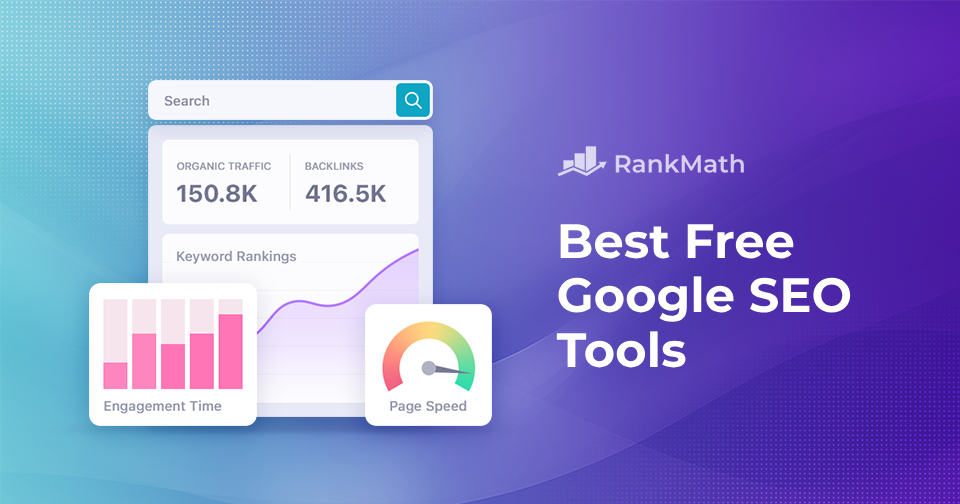
If you’ve been reading articles about SEO, then you should be familiar with the notion that SEO takes time. It requires an ongoing commitment based around a long-term strategy that helps to keep your website highly relevant in the eyes of Google so that you can grow and maintain your SERP ranking.
While ongoing SEO can sometimes feel like a frantic exercise that never lets up, there are benefits to finding time to analyse your current SEO via an audit. An SEO audit can help you put everything in perspective and discover new opportunities and eliminate redundant or ineffective elements of your strategy.

Many webmasters admit to never having performed an SEO audit, and this is understandable considering how much work they have on their plate. This is why an SEO audit is often the first thing a professional Sydney SEO agency will do when contracting with a new client, as it allows them to get a clear picture of the state of optimisation (if any) and what the necessary next steps are.
Fundamentally, an SEO audit is a review of a websites’ performance in every aspect that is influential for SEO. An SEO audit can be incredibly valuable as a means of discovering problems with your SEO that can be corrected as well as inform any future strategising that you take part in.
So, how do you go about performing an SEO audit? The following will list the key steps you need to take in order to complete a successful review of your website’s SEO performance.
Search your business name and assess the results
If your business name isn’t using commonplace keywords, then ideally you should reach the top SEO position when you search for it on Google. For example, if your business was called “Top Emergency Plumbing” then it might be hard for you to get the top spot on your brand name since that is a keyword many of your competitors could be targeting. If your business name was “Harry’s Emergency Plumbing”, it would more easily rank on the top spot because there is a unique modifier on the search term (Harry’s).
The main utility of searching your business name is to ensure that it shows up. This helps you identify whether or not there are any copycats imitating your business, or if you have earned a Google penalty and have been excluded from search results.
Google penalties can be covered in-depth in their own article. In brief, they are how Google polices the behaviour of websites and earning a penalty is devastating for your website, so you want to avoid getting one.
If your website does not show up and it’s not due to a penalty, it could be because of a serious technical issue.
Your appearance in Google search results also allows you to audit the way the search result for your website looks. You will be able to see what your meta description looks like, examine any sitelinks that appear, and whether or not there are any knowledge panels, FAQs, and other things related to your business featured as a snippet.
For example, if you search “Nike” on Google, you will get a big knowledge panel that shows up the right side of the screen with information collected from Wikipedia. Below the organic result for the Nike website, you will get the organic result with sitelinks included. Beneath that, there is a snippet filled with Nike related videos, and below that, a Google maps snippet showing where the closest Nike store is to you. Further down the page, there is a snippet featuring news articles about the brand.
Of course, your business likely won’t enjoy all of the perks that Nike has in search results. Nike gets this much attention because it is one of the most recognised brands in the world and it gets a great deal of search interest, so Google seeks to present as much information to users as possible before they even click on a result.
While you won’t be able to make your brand famous overnight, you can take steps to increase the likelihood that sitelinks are displayed. The most important step to take is to have a clearly defined site architecture that makes it easy for Google to know what pages to include sitelinks for.
Having a Google My Business listing will also help you get a Google Maps snippet. As for other snippets, you need to grow your brand until it becomes relevant enough to be organically linked and noteworthy enough to have a Wikipedia article written about it.
Visit your website on a mobile device
Mobile optimisation is incredibly important since, these days, most people are searching for products and services on their mobile devices. From a marketing perspective, people searching on mobile are doing it more impulsively then they would be with a desktop device, meaning that they are in a state of mind that can be more easily marketed to.
Therefore, it follows that your SEO audit should include a test of your website on a mobile device. It’s essential that the user experience on mobile is on par with the desktop experience and that they can access every aspect of the site just as easily.
You want to ensure that your website translates well when displaying on mobile devices. It’s important that menus are easy to navigate and that there are no disadvantages to browsing your site on a mobile device.
If you notice any problems with the mobile experience of your website, then you need to make correcting them a priority on your to-do list. Today’s web users have little patience for a poor experience with a website, and they will abandon your site quickly if it is difficult to use on their mobile phone or tablet.
Test the speed of your website
Another factor that influences the user experience on your website is how quickly it loads. Whether it’s on the mobile or desktop version of your site, site speed is an essential ranking factor that Google uses to determine where to place your website in search results.
You could have an excellent website with great architecture, design, and content, only for it to be thwarted by the fact that it loads too slowly. Statistics show that most users won’t wait longer than 3 seconds for a website to load before abandoning it, so you need to make sure your site is top-notch when it comes to performance.
Google offers a free speed testing tool that you can utilise to assess the performance of your website. The results of this test will give you a general speed score and show you what elements of the site are slowing it down.
There are many things that can be the culprit of a slow loading website. Common examples include high-resolution images, clunky code, or animated graphics/background videos. Sometimes the fancy design elements that really make your site stand out can be the most taxing on your site speed, so you need to try and find the right balance between style and performance.
Find and resolve faulty links
Ever clicked on a link only for it to display a “content not found” error? It’s frustrating, right? It’s absolutely frustrating for your users and can turn away a potential conversion if it’s allowed to happen to them.
As part of your SEO audit, you need to ensure that you don’t have any broken links on your website. There are several tools you can use to scan all the links on your website to ensure that all of them are working correctly.
Assess the overall user experience
The time that users spend on your website and how they behave is all measured by Google and plays a role in ranking you in search results. This is where using Google analytics comes in handy, as it can help you see which pages most popular, how long users are spending on different pages, and more.
All of this data can be used to help you craft a better website that is more user-friendly. Even with all the analytical data, you need to draw inferences from it to improve your website.
For example, if users are leaving quickly after landing on your home page, you can assume that there’s something wrong with the layout that’s driving them away. Perhaps the design of your website hasn’t been updated in a while, and it looks old in comparison to competitors.
The visual design of a website is very important, as it adds credibility to your business. If your website looks like the equivalent of a back alley marketplace, then you won’t engender the same amount of trust as a competitor’s website that looks clean and modern.
Other things like having too many pop-ups or text that is too dense or small can have a negative impact on user experience. It’s best to adopt a pyramid structure to the content on your website, ensuring that the first page a user sees isn’t too crowded, but is easy for them to start a journey and explore deeper if they wish to.
Creating the ideal user experience requires a lot of testing, so it’s ok if you don’t get it perfect the first time around. This is why an SEO audit is so important, it allows you to analyse what’s working and what’s not working so you can adjust your website accordingly.
Ensure that you have adequate security on your website
These days, cybercrime and data breaches are a big issue, and web users want assurances that their browsing experience is secured. You need to make sure that your website has an SSL certificate (which transforms your address to HTTPS) that shows users and search engines that you have done your due diligence in securing your website.
The security of your website is a significant ranking factor. After all, Google does not want to send users to a website that could cause the security of their device or their personal information to be compromised.
If people are spending money through your website (such as an e-commerce store), then it’s essential that you have security surrounding payment methods. Credit card fraud is a real thing, and people want to know that if they enter payment information into your website it is secured against being accessed by malicious persons.
See what content needs to be updated
Of course, the actual content that appears on your website also needs to be assessed during your SEO audit. The quality and depth of your content is an important ranking factor since Google wants to send users to websites that allow them to get all the answers that they seek in one convenient place.
It’s important to use analytics to assess which pieces of content are doing best and which are underperforming. From this data, you can update or expand content accordingly.
Updating your content and keeping it optimised is essential for driving traffic to your website. This is especially true when it comes to blog articles you have on your website, as you can reach a lot of users by providing useful information to them for free.
Performing this aspect of your SEO audit can help you identify opportunities to optimise content with keywords and CTA’s (calls to action) that make it more relevant to search engines and more effective at converting readers. Adding internal links to other pages where relevant can also be helpful as a way to enhance the content on your website.
Your content may also need updates in terms of the accuracy of the information presented or the quality of the writing. It’s best to try and keep the quality standard of your content consistent across all pages.
Check your backlinks
One of the cornerstones of SEO optimisation is backlinks – both their quality and their quantity. Checking your backlink profile is an important step in your SEO audit, considering how impactful quality backlinks are for your Google ranking.
If there are low-quality backlinks associated with your website, you need to disavow them. This means that you elect Google not to associate that link with your website. You need to do this strategically and assess which links are worth keeping and which you are best without.
While you are doing this, you will gain insight into what types of websites link most to you and in what context. This can help to inform your future link building strategies so you can make them as effective as possible for earning you great quality backlinks.
Conclusion
Assessing the quality of your website’s SEO performance with an SEO audit is something that absolutely needs to be a part of your long-term digital marketing strategy. It’s worth performing an audit on a semi-frequent basis or when Google announces an algorithm update that changes the value of different ranking factors.
All in all, your SEO strategy needs to be adaptable so that you can keep ahead of your competitors. If you allow yourself to become complacent, then a harder-working competitor can easily pull ahead of you, and you will be forced to play catch-up.
Remember; it’s easier to audit and update your SEO on a consistent basis than it is to try and correct it in reaction to competitors. Maintaining your ranking position is easier than trying to claw it back after you lost it.

We are a friendly and reliable team that pays detailed attention to your projects and management of your brand. Our team at SEO Shark has a passion for all things online. We constantly innovate using the latest professional techniques and strategies.



